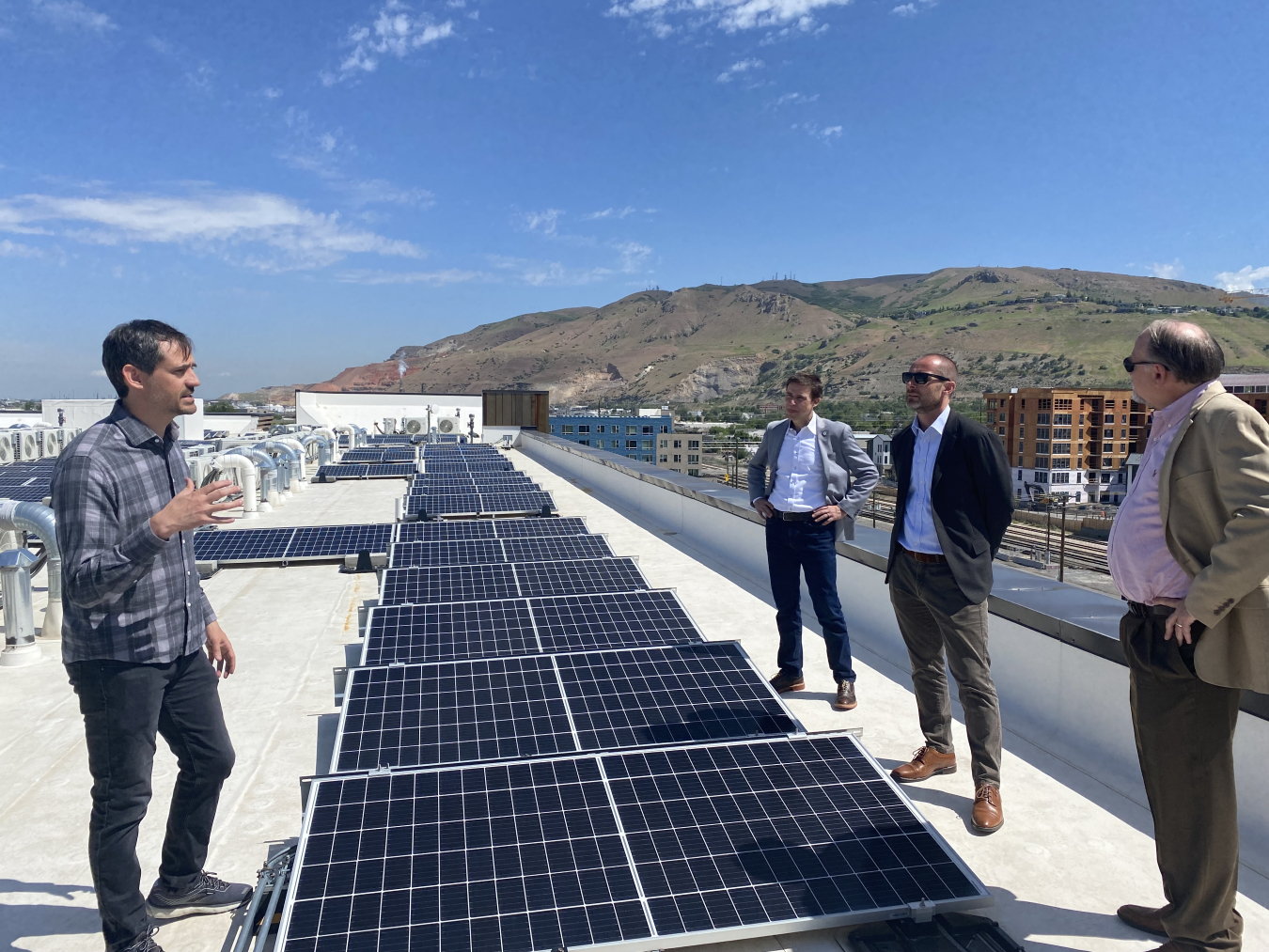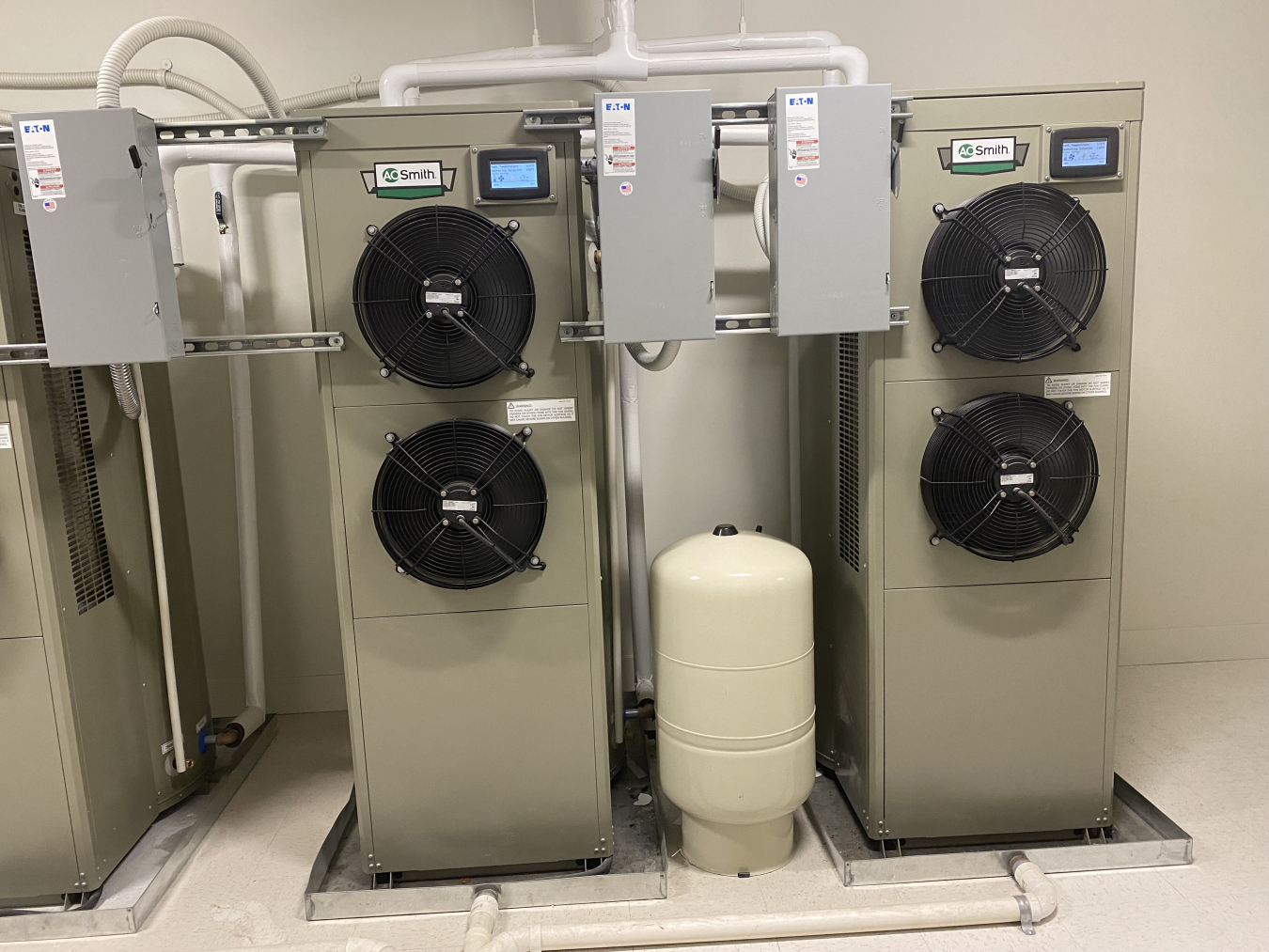This blog post is the second in a new series of stories that will document the U.S. Department of Energy’s Connected Communities project over the next five years, including the advancements and lessons-learned of its 10 demonstration projects.
November 28, 2023This blog post is the second in a new series of stories that will document the U.S. Department of Energy’s Connected Communities project over the next five years, including the advancements and lessons-learned of its 10 demonstration projects, which are scattered across thousands of buildings around the country. Follow the newsfeed on BTO’s home page and subscribe for updates to catch them all!

Across the Wasatch Range at Utah’s Salt Lake City and its suburbs, a local utility named PacifiCorp (Rocky Mountain Power) has embarked on a community-scale experiment. They are leveraging grid-interactive efficient buildings (GEBs), to help solve some of today’s most pressing challenges exacerbated by climate change at Utah and beyond. In addition to providing grid services, delaying distribution infrastructure upgrades, and reducing carbon emissions, these buildings can ensure the health, safety, and resilience of buildings and their occupants during extreme weather-related grid emergencies by delivering affordable and clean energy to their community.
This is a demonstration project in DOE’s Connected Communities that aims to seamlessly integrate 700 discrete building spaces into PacifiCorp’s daily grid operations, by linking hundreds (if not thousands!) of various systems, equipment, and plug loads found across the Salt Lake City region, including new and existing single-family homes and multifamily apartments to college research laboratories, downtown office spaces, industrial manufacturing facility, and a mass transit hub in the urban center of Salt Lake City. By connecting this diverse group of electricity end uses at the grid level, PacifiCorp plans to create a new and holistic approach that allow utilities to coalesce, manage, and coordinate disparate but flexible power resources located at each building space – such as batteries, solar panels, electric vehicles, and water heaters, collectively called distributed energy resources (DER) – and help meet its customers’ energy demand in a novel way, which do without expensive grid upgrades that keep the heaters on during cold snaps while preserving energy affordability.
Following the 1970s’ energy crisis that caused energy prices to soar amid dwindling supplies, many states across the United States began requiring electric utilities to develop Integrated Resource Plans (IRP). Often in the form of a comprehensive report that contain various energy-related data, metrics, and strategies associated with energy procurement challenges, solutions, and considerations, utilities utilize IRPs to better understand the energy demand, supply, and risks that could prevent them from meeting customer energy demands at cost-effective prices over the long term. The utilities continue to utilize IRPs today as planning tools for anticipating future needs that keep grids reliable and energy prices reasonable. However, the recent rapid growth of weather-related disruptions has begun to underscore how urgently expensive grid infrastructure upgrades are needed, which raised a major concern among stakeholders due to the consequent increase in energy burden expected for millions of American families. Through this project and others in the Connected Communities portfolio, DOE and its partners plan to develop, refine, and scale the collective ability of GEBs to help keep energy prices reasonable in part by deferring (and deterring) capital expenditures for grid upgrades, while also mitigating the societal costs of fossil-fueled contingency (emergency) generators that operate 24/7 but only contribute to the grid intermittently.
PacifiCorp Connected Community’s more than 700 units of building space represent a diverse set of construction stages, locations, and building types – each representing the project’s three-pronged approach: deployment, aggregation, and optimization. It includes a suburban 610-unit apartment complex called Soleil Lofts with 230 load-managed electric vehicle (EV) charging stations, alongside 5 MW of on-site solar PV and 12.6 MWh of battery storage that are connected to form a virtual power plant (VPP). Another is a downtown office building with rooftop solar and heat pumps, as well as GIV Group’s mixed-use, all-electric affordable housing development called Citizens West that has a community heat pump water heater, batteries, and EV chargers that utilize excess electricity generated from the district solar PV array. The transportation research laboratory of Utah State University has offered their facilities – including its microgrid – to the project, as has Packsize International’s manufacturing facility with 50 load-managed EV chargers. And finally, the Utah Transit Authority’s mass transit hub is also a part of the project, including its maintenance garage and parking for 132 electric busses, all of which require close coordination to accommodate surges of unpredictable power that trains and station equipment use throughout the day.

These buildings are currently in various stages of development, anywhere from the design phase of new buildings to existing buildings that have already been retrofitted and are fully operational, all of which are scattered across Utah’s cities of Salt Lake City, Herriman, and North Logan. This diversity makes providing energy services to customers a challenging task for utilities. However, it provides them with real-world opportunities to experiment with the concept of flexible load – a collection of building loads and DERs that could be flexibly leveraged to provide power and grid services, including load shifting and shedding through demand response – and optimize various power resources for an integrated building-to-grid energy management.
First in the “deployment” step, PacifiCorp worked with its stakeholders to retrofit existing buildings with on-site generation such as solar PV and battery energy storage provided by Sonnen. These were supplemented by installations of load-managed electric vehicle (EV) charging and energy-efficient heat pumps, tankless water heaters, and adaptive lighting, which in combination with solar PV and batteries helped the projects’ buildings achieve 30% or more energy efficiency and a total 8.26 MW of combined flexible load. Next in the “aggregation step,” PacifiCorp is leveraging its behind-the-meter utility-managed distributed energy resource management system (UDERMS) – an industry first – to coalesce participating buildings and DERs into a flexible load resource across the Salt Lake City metropolitan area. This flexible load resource can then be utilized when needed to provide grid services such as frequency regulation and/or load-shedding through demand response. Then in the “optimization” step, PacifiCorp and its partners will balance their collective DERs for grid services and on-site consumer experience through iterative fine-tuning of their UDERMS software. Ultimately, PacifiCorp wants their software to be a turnkey solution rather than a custom one that can be scaled for eventual market adoption. All in all, these steps should inform stakeholders across the country on how current and future projects should be designed, built, and retrofitted to further streamline project work.
In PacifiCorp’s Connected Community, though, the last two steps – aggregation and optimization – are particularly important to achieve seamless building-to-grid integration and operation. Currently, approaches to integrate and control grid-connected DERs (e.g., solar PV, batteries, heat pumps) at small scales (like homes and groups of buildings) exist only through building-localized technologies like smart panels. However, its meaningful equivalent for the utilities aimed at grid-scale control, and the knowledge required to integrate numerously different DER types with centralized energy resources (e.g., power plants, grid-scale batteries), for mutually beneficial and simultaneous coordination of building-to-grid operation does not exist. Moreover, round-about ways to achieve this feat have proven difficult for grid operators to use. Likewise, these barriers have hindered tighter integrations of flexible load resources into IRPs, which has hampered their deployment in real-life grid emergencies because they lack the requisite scalability and responsiveness – both of which are imperative for valuable frequency services that flexible load resources are superbly positioned to provide.
“If it scales, it brings value to the utility and its customers. If it doesn’t scale, it doesn’t,” says James Campbell, director of innovation and sustainability policy at PacifiCorp. PacifiCorp is partnering with OSI, who is leading the software development to develop this novel UDERMS technology, which integrates and controls distributed and centralized power resources simultaneously and optimally with ease. Pacific Northwest National Laboratory is providing the team with cybersecurity technical assistance, while Lawrence Berkeley National Laboratory is supporting the project with cross-cohort analysis. The University of Utah has also partnered with PacifiCorp to turn UDERMS technology into a market-ready solution. With this technology, the project can fill a critical market gap for sorely needed wholesale frequency services that did not exist and help solve a part of the grid’s climate challenges affordably. In addition, by providing data from the project to more formally and holistically include flexible load resources in PacifiCorp’s IRP, a utility-driven distributed energy resource management approach is expected to inform new business models for many load serving entities nationwide. By making GEBs front and center in tomorrow’s energy system planning, improvements to the grid’s reliability and resilience can scale quickly and cost-effectively throughout the United States.
Despite still being in the project’s early stages, the team has already learned valuable lessons that can help other Connected Communities projects. “On average, there are millions of daily hacking attempts to the energy infrastructure," Campbell says. "We need to be absolutely sure that the system being developed is safe, and those that develop it are actively mitigating security vulnerabilities.” While the team has encountered and overcome numerous hurdles so far, it took a year to bring all project team members into compliance with necessary cybersecurity requirements. This should help ensure that UDERMS is researched, developed, and deployed in the field cyber-securely and functions as intended to buttress reliable and resilient building-grid operations.
As adoption of on-site electricity generation and storage become ever more popular, the nature of customer roles in the energy system will continue to shift. From unidirectional transactions (utilities to customers) in the past to bidirectional transactions (between utilities and customers) of the present and future, approaches like UDERMS attempt to maximize the co-benefits that this new paradigm enables while accelerating America’s energy transition. Only time will tell, but if everything turns out just right, American families will get to enjoy a degree of energy independence with financial benefits from selling their rooftop solar-generated energy back to the grid, which provide utilities with a sigh of relief during grid disruptions and give planet Earth a moment to catch a fresher breath of air.
For general information on this Connected Community and others in the cohort, follow this blog series in BTO’s newsfeed on BTO’s home page. DOE’s Grid-interactive Efficient Buildings Initiative, which funds Connected Communities, also has a dedicated website with fact sheets on GEB concepts, strategic policy reports, and a place to subscribe for email updates from the initiative. Berkeley Lab, which is the national coordinator of Connected Communities, also maintains a website with a growing library of research reports, case studies, and other technical information for stakeholders in the buildings and utility industries.

